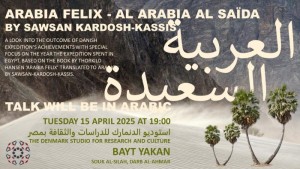Knowledge is certainly one
of the means of pleasure.
Samuel Johnson's Rasselas (65)
Whate’er thy theme, where the magic might
Of the stern Kings, that dwell mid ocean’s roar,
Or Sindbad’s perils, or the cruel wiles
Of Afric’s curs’d enchanter charm us more
Or aught more wondrous still our ear beguiles,
Well pleas’d we listen to thy fabling lore,
And Truth itself with less attraction smiles.
Thomas Russell 2.
The East was la mode in the eighteenth century English literature. M. P. Conant introduced an interesting survey and classification of the eighteenth century English literature related to the East 3 However, I would like to divide that literature into two main types: imitations and pseudo-translations. The imitations of the Arabic, Turkish and Persian literatures were uninfluential and had nothing to add. They failed to rival the originals in their structure, flavor and suspense. The pseudo-translations were deemed unpopular except the One Thousand and One Nights or the Arabian Nights. Of its most famous early translations were those of Antoine Galland (1704-1707), Edward William Lane (1838-1841), John Payne (1882-1884), and Richard Burton (1885-1888) 4.
The Arabian Nights was a source book for a great number of the eighteenth century writers. Immediately after Galland’s Arabian Nights, Turkish and Persian collections of stories and tales were also translated by a French savant, Pétis de la Croix, and revised by La Sage. Then, there appeared pseudo-oriental fabrications by another Frenchman, Gueullette5. The fact that those works came to England from French, made them welcome by the English reading public.
The influence of the Arabian Nights on the Orientalism of the time was incomparable. Conant writes
To the magical country the Arabian Nights, ever since its first appearance in English in the early years of the eighteenth century, has proved a favorite gateway 6.
Johnson’s fascination with the East and its culture was never fortuitous; he showed a profound concern about the subtle and sophisticated subject of the East, and Rasselas (1759) constituted a part of his responses to the intellectual situation of the Eastern culture. Like many others of his time, he “borrowed extensively from the Arabian Nights”7. The Arabian Nights was a source of inspiration for Johnson’s Rasselas. On the charms of Rasselas, Boswell remarks:
It enjoys all the charms of oriental imagery, and all the forces and beauty of which the English language is capable 8.
It is essential to investigate the cultural assumptions and ideological framework that allowed many of the eighteenth century writers to group together both Shakespearean plots of medieval butchery and dismal ruins with fantastic tales of the exotic East. In the case of Johnson, I would argue that his interest in the culture of the East showed a great passion for all things “oriental” as a symptom of cultural malaise suffer-ed by eighteenth century writers. Rasselas is a tableaux of Johnson’s admiration of the exotic East; luxuries, enchantment, escape, picturesque, Gothic, jinn, effrits [sic], sorcery; dates and coffee trade, and land of deep history and strategic geographic location that controls old great trade routes.
Rasselas, the most famous Oriental tale ever written by an Englishman, is set in the East where an Eastern prince Rasselas and his sister travel from Abyssinia to Egypt, and where Imlac sees the world of Palestine, Syria, Iraq, Persia and Arabia -- an area that constitutes a cradle of early civilizations, and bed of Islam.
Johnson found in the Arabian Nights a vast palette of effects and situations to imitate. M. J. Ali mentions that Johnson adapted the trappings and themes of the Nights and its successors for moralistic and philosophic purposes 9.
Thus, Rasselas enjoyed an oriental lore. In this context, I would like to trace some of the influences of the Arabian Nights on Rasselas.
First: Rasselas was meant to be instructive and moral with oriental background and setting. This intention was made in imitation of the Arabian Nights which is regarded by the majority of the scholars as “instructif et moral” 10.
Second: Rasselas opens with a call to the reader’s attention. Johnson writes
Ye who listen with credulity to the whispers of fancy, and pursue with eagerness the phantoms of hope; who expect that age will perform the promises of youth, and that the deficiencies of the present day will be supplied by the morrow; attend to the history of Rasselas prince of Abissinia (39).
This opening is made in imitation of the Arabian Nights which opens with sentences that attract the readers’ attention. It opens with the following statement
It is said, O wise and happy King, that once there was a prosperous merchant who had abundant wealth and investments and commitments in every country. He had many women and children and kept many servants and slaves (17).
Third: Like some of the tales of the Arabian Nights, Rasselas displays remoteness _ not the monstrous or the wild _ from ordinary life. Setting the story in the East is, in part, a result of cultural uneasiness and therefore a need to go away to a remote land and a new world. One of the main ideas of Rasselas is escapism. From the early beginning of the story, we see Rasselas himself endeavoring to find a new world, away from the reality of his life. Moreover, M. J. Ali writes Although the acceptance of the Oriental tale [Arabian Nights] still falls within the neo-classical premises of the age, it, nevertheless, reveals a restless search for new visions beyond the dull and limiting conventions 11.
Fourth: the structure of Johnson’s Rasselas is an att-empt to imitate that interesting story-within-story structure of the Arabian Nights. Rasselas is composed of a series of stories told to describe the adventures of Rasselas.
Fifth: Johnson’s choice to write about the East, in its broader sense, locates him within a series of debates such as ancient civilizations created and flourished in the East, and that the origin of poetry being in the East. Poets enjoyed a cozy place in Rasselas. When the poet attended Rasselas in his apartment, the poet entertained him from day to day with novelty and instruction, so the prince regretted the necessity of sleep, and longed till the morning should renew his pleasure (54).
Later Rasselas expressed his fascination with the poetry of the East (60-1). In these situations we realize how Johnson follows a technique used in the Arabian Nights. Such scenes demonstrate an element of suspense, an essential characteristic of the Arabian Nights. It recalls the opening of the Arabian Nights and the beginning of each story every night after-wards. Then day time was used to make Shehrazade lapse into silence, “leaving Shahrayar burning into curiosity to hear the rest of the story”12.
On another level, poetry reciting is essential in the Arabian Nights. It is a major constituent of a great number of the Nights. Husain Haddawy mentions the importance of verse to the Arabian Nights. He writes Of the distinctive features of the Nights is that the prose narrative is interspersed with verse passages, some of which were interpolated by the original editor, some by subsequent copyists 13.
In Rasselas, Imlac explains to Rasselas the business of the poet as
to examine, not the individual, but the species; to rem-ark general properties and large appearances: he does not number the streaks of the tulip, or describe the different shades in the verdure of the forest ... To be a poet, said Imlac, is indeed very difficult (61-2).
Sixth: like the Arabian Nights, Johnson paid much attention to talk about Rasselas’ characters throughout a variety of events and situations. In other words, like the Arabian Nights, Rasselas enjoys a feature in common with the picaresque novel: it pays more attention to action rather than character development. All characters in the Arabian Nights whether they were viziers, sultans, princes, or ordinary people remained simple or even naîve. So is the case with Rasselas, Imlac and Nekaya of Rasselas.
Seventh: the Arabian Nights and Rasselas enjoy some Gothic elements. Consider the Happy Valley in Rasselas and the cave in Ali Baba and the Forty Thieves in the Arabian Nights. Moreover, Ioan Williams writes
In the Arabian Nights are many most striking examples of the terrible joined with the marvelous: the story of Alladin and the travels of Sindbad are particularly interesting 14.
Eighth: Like the Arabian Nights, Rasselas can be read on more than one level, by the young and the grown ups; both displays simplicity, lushness and extravagance of style. They are distinguished by their interest in the lucidity and eloquence of their styles unlike those works of the eighteenth century old rhetorical decorations.
Ninth: Rasselas depicts images of some Eastern civilizations, and also portrays the natural beauty and luxury of the East. It opens with the description of the Royal Palace in the Happy Valley (39-41). Also mentioned is the Egyptian generosity and the luxury of the Palace where the Bassa [Pasha] of Egypt dwells (83). Such descriptions recall the luxurious scenes of the palaces of the Muslim Abbaside Caliphes including Haroun al-Rashid in the Arabian Nights. In addition there is the reference to the various civilizations of the East. Rasselas celebrates Pharonic Egypt in the following passage
The old Egyptians have left behind them monuments of industry and power before which all European magnificence is confessed to fade away. The ruins of their architecture are the schools of modern builders, and from the wonders which time has spared we may conjecture, though uncertainly, what it has destroyed (103)
Then, Imlac expresses his fascination with the pyramids. He says
The most pompous monument of Egyptian greatness, and one of the most bulky works of manual industry, said Imlac, are the pyramids; fabricks [sic] raised before the time of history, and of which the earliest narratives afford us only uncertain traditions. Of these greatest is still standing, very little injured by time (105).
Tenth: Rasselas contains references to the rich econo-my and profitable trade of the East. Rasselas enters Cairo and realizes that
Commerce is here [in Cairo] honorable: I will act as a merchant ... you will see all the conditions of humanity, and enable yourself at leisure to make your choice of life (75).
This comes in imitation of the trade scenes and situations of the various tales of the Arabian Nights. For example, the first night is The Story of the Merchant and the Demon 15.
Eleventh: Rasselas is replete with fables and proverbial wisdom. I would argue that some of their geneses were developed from tales of the Arabian Nights. For example, consider The Tale of the Envious and the Envied from the forty-sixth night 16.
Finally, it is needless to say that it is hard to ignore Johnson’s borrowings from the Arabian Nights. The influence of the Eastern cultures on the eighteenth century literature is worthy of more elaborate studies.
Notes
1. References to Rasselas are extracted from Samuel Johnson’s The History of Rasselas, Prince of Abissinia. Ed. with intro. by D. J. Enright. 1959, Rept; London: Penguin Books, 1985. Pages numbers are inserted between brackets in the text. And references to the Arabian Nights are extracted from Husain Haddawy, trans. and intro. The Arabian Nights. New York and London: Norton & Norton, 1990.
2. Thomas Russell. “To the Author of the Arabian Nights Entertainments” in Sonnets and Miscellaneous Poems (Oxford: n. p., 1789), Sonnet 7.
3. Martha Pike Conant. The Oriental Tale in England in the Eighteenth Century (1908, Rept; New York: Octagon Books, 1966), 1.
4. For detailed information on the printed editions of the Arabian Nights see Husain Haddawy, trans. and Intro. The Arabian Nights. (New York and London: Norton & Norton, 1990), ix-xxix.
5. See Conant, The Oriental Tales in England in the Eighteenth Century, 24 and 29.
6. Ibid. 1.
7. For information and a list of the eighteenth century writers who were influenced by the Arabian Nights see appendices A and B in Conant’s The Oriental Tale in England in the Eighteenth Century.
8. James Boswell. Life of Johnson. Ed. W. Chapman (1759, Rept; Oxford: Oxford University Press, 1970), 241.
9. Muhsin Jasim Ali, Scheherazade in England: A Study of Nineteenth-Century English Criticism of the Arabian Nights. (Washington, D. C.: Three Continents Press, 1981), 19.
10. Mohamed Abdel-Halim. Antoine Galland: sa vie et son oeuvre (Paris: n. p., 1964), 263. However, Jorge Luis Borges mentions that the Arabian Nights is a type of fiction meant to entertain and move the reader without conveying a certain message. See The New York Review of Books (21 October 1971), 49.
11. Ali, Scheherazade in England. 19.
12. Haddawy. The Arabian Nights, 18.
13. Ibid. xxvii.
14. Ioan Williams. Novel and Romance, 1700-1800: A Documentary Record (New York: Barnes and Noble, 1970), 285.
15. Haddawy, The Arabian Nights 14.
16. Ibid. 101-2.
References
Abdel-Halim, Mohamed. Antoine Galland: sa vie et son oeuvre. Paris: n. p., 1964.
Ali, Muhsin Jasim. Scheherazade in England: A Study of Nineteenth-Century English Criticism of the Arabian Nights.Washington, D. C.: Three Continents Press, 1981.
Borges, Jorge Luis. The New York Review of Books. New York: n. p., 1971.
Boswell, James. Life of Johnson. Ed. W. Chapman. 1759, Rept; Oxford: Oxford University Press, 1970.
Conant, Martha Pike. The Oriental Tale in England in the Eighteenth Century. 1908, Rept; New York: Octagon Books, 1966.
Haddawy, Husain, trans. and Into. The Arabian Nights. New York and London: W. W. Norton & Company, 1990.
Johnson, Samuel. The History of Rasselas, Prince of Abissinia. 1959, Rept; London: Penguin Classics, 1985.
Russell, Thomas. “To the Author of the Arabian Nights Entertainments” in Sonnets and Miscellaneous Poems. Oxford, n. p., 1789.
Williams, Ioan. Novel and Romance, 1700-1800: A Documentary Record. N. Y.: Barnes and Noble, 1970.
Knowledge is cetrainly one
of the means of pleasure.
Samuel Johnson’s Rasselas (65)




